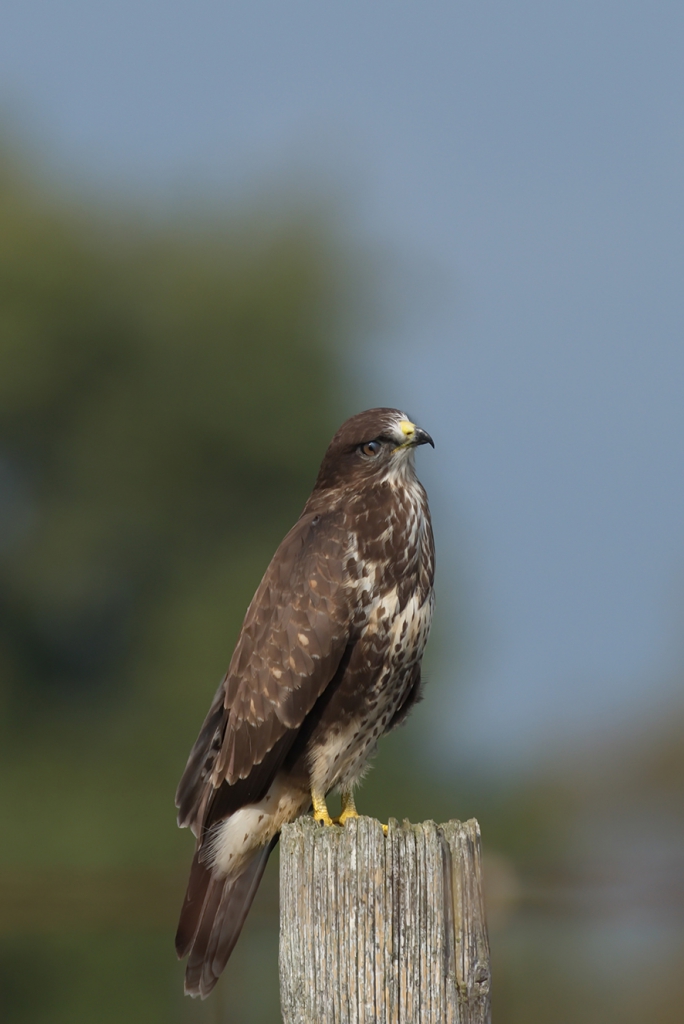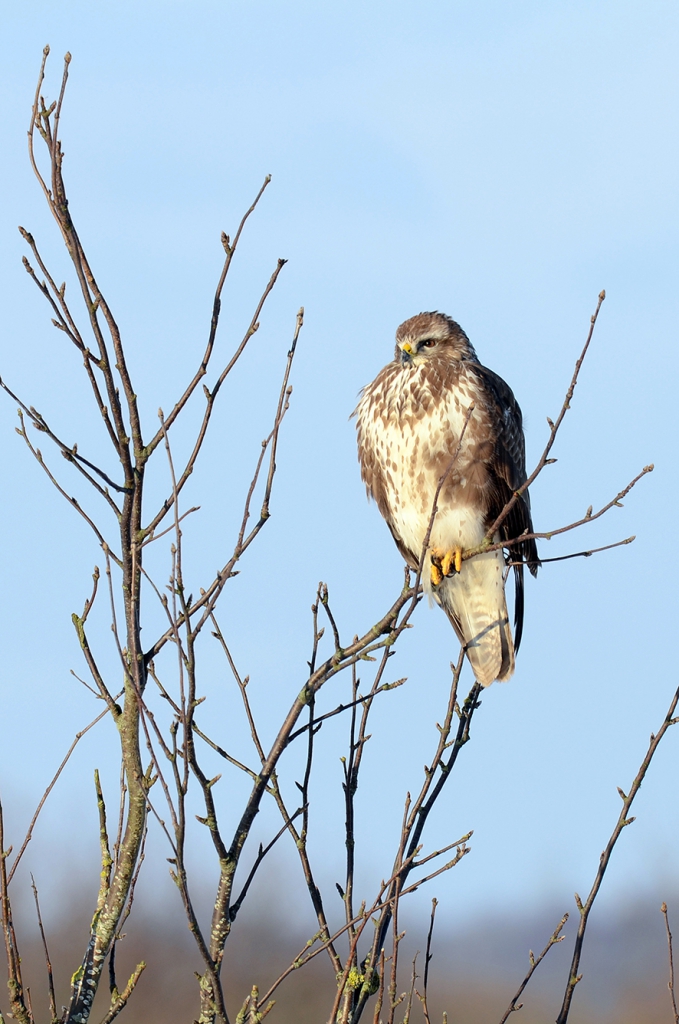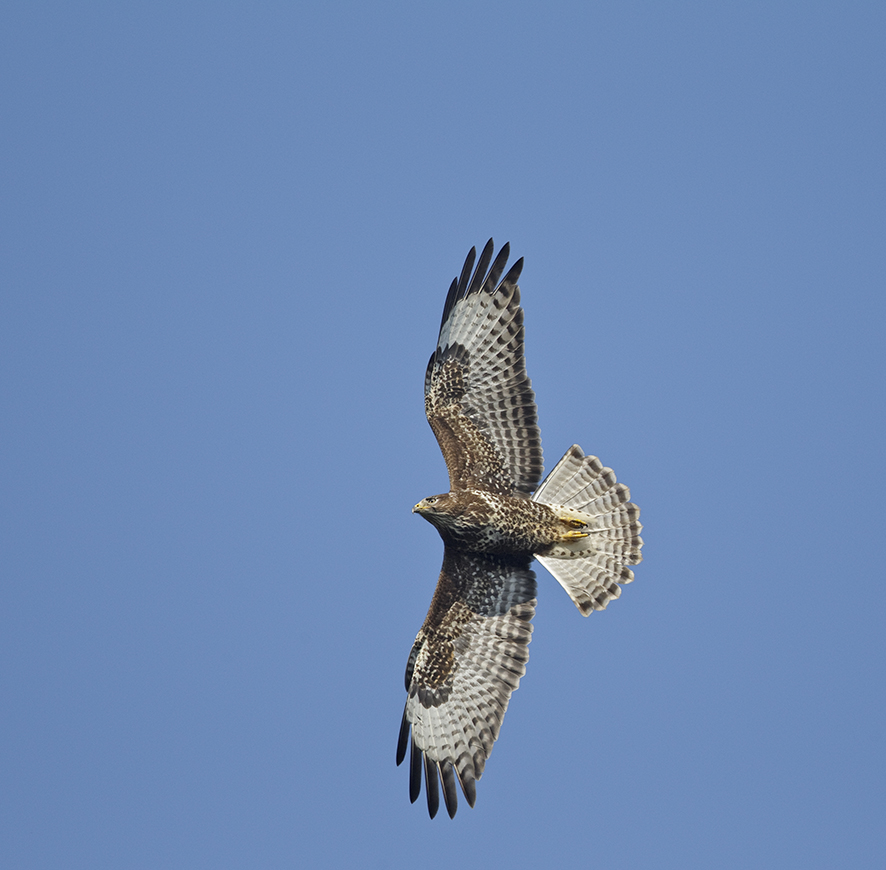Common buzzard
- The motorway dustman
The buzzard belongs to the border area between forests and open land. It nests in the forest ’s large trees, but feeds in the open countryside with fields and meadows. The buzzard captures a number of mice, but it also likes to eat carrion. In Sweden, the buzzard is named ”ormvråk” (worm buzzard) because earthworms are also included on its menu of favourite delicacies. The buzzard likes to frequent the motorway and other major roads where animals killed in traffic accidents are an easy source of food. Particularly in winter, the buzzard’s silhouette is visible in the bare trees along the motorway. Buzzards from Norway and Sweden winter in Denmark and this doubles the number of buzzards in the country.

Catches mice and ”meows” like a cat
The buzzard often sits in a tree or on a post, scouting for prey. It can also stand and ”hover” in the air, where it remains still in the same place with flapping wings. You can also often hear its meowing call as it hovers over the open countryside.
The glider's friend
In spring many buzzards migrate through Denmark. Then you can sometimes see a ”buzzard screw”, where a large number of buzzards surge upwards together. The thermal updrafts lift them in circling movements, higher and higher, without the need to flap their wings. Glider pilots use the same technique when they need to get height under the wings. Therefore gliders keep their eyes on buzzards when they have to find the warm updrafts.

Facts
The buzzard is a medium-sized bird of prey with broad wings and a short tail. It is 54 cm long and has a wingspan of 113-128 cm. It varies greatly in colour - from dark brown to almost completely light. It is common throughout the whole country and the population has been rising for a number of years.


